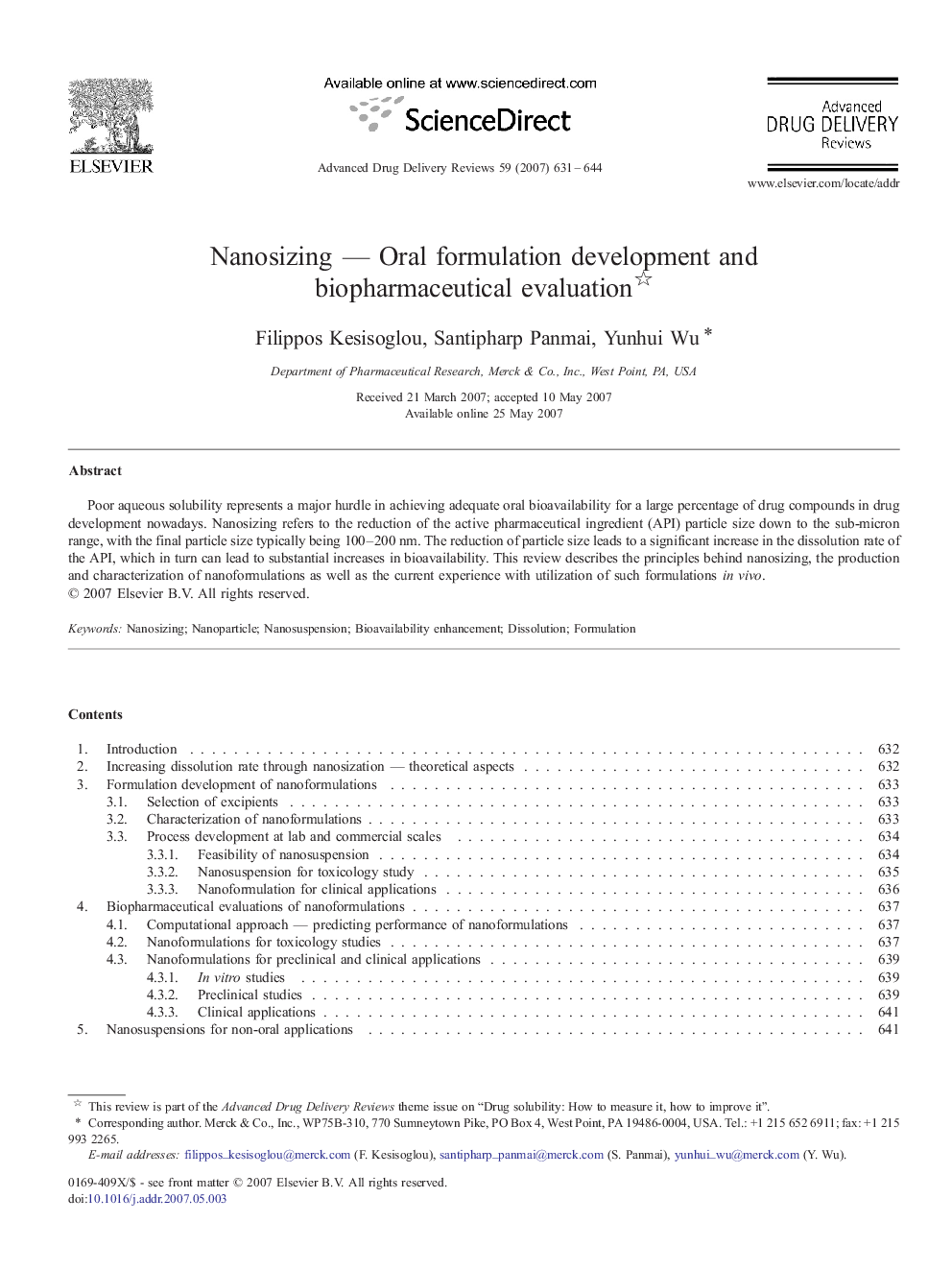| Article ID | Journal | Published Year | Pages | File Type |
|---|---|---|---|---|
| 2072011 | Advanced Drug Delivery Reviews | 2007 | 14 Pages |
Abstract
Poor aqueous solubility represents a major hurdle in achieving adequate oral bioavailability for a large percentage of drug compounds in drug development nowadays. Nanosizing refers to the reduction of the active pharmaceutical ingredient (API) particle size down to the sub-micron range, with the final particle size typically being 100–200 nm. The reduction of particle size leads to a significant increase in the dissolution rate of the API, which in turn can lead to substantial increases in bioavailability. This review describes the principles behind nanosizing, the production and characterization of nanoformulations as well as the current experience with utilization of such formulations in vivo.
Related Topics
Life Sciences
Biochemistry, Genetics and Molecular Biology
Biotechnology
Authors
Filippos Kesisoglou, Santipharp Panmai, Yunhui Wu,
